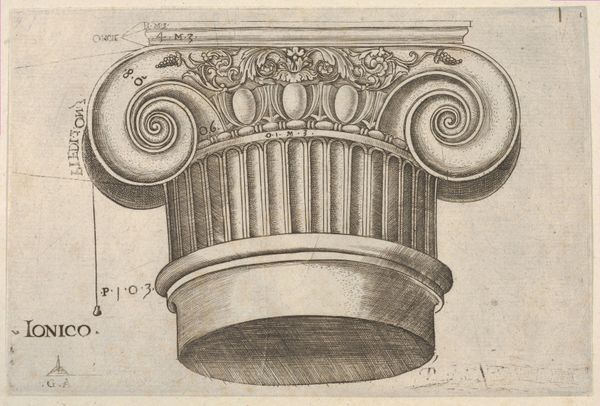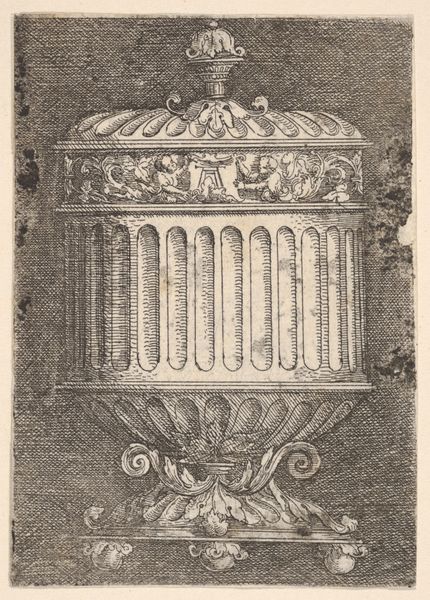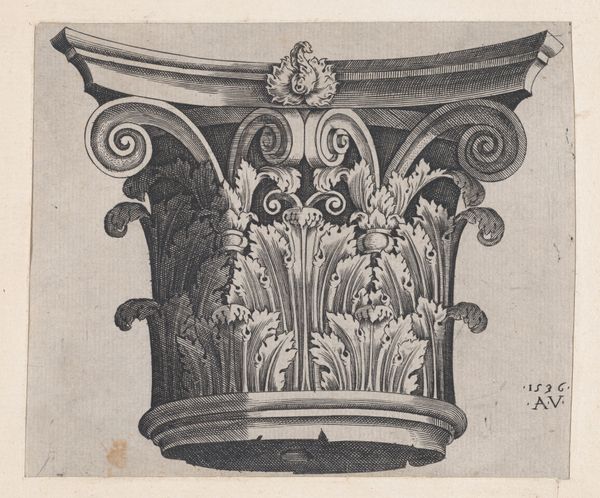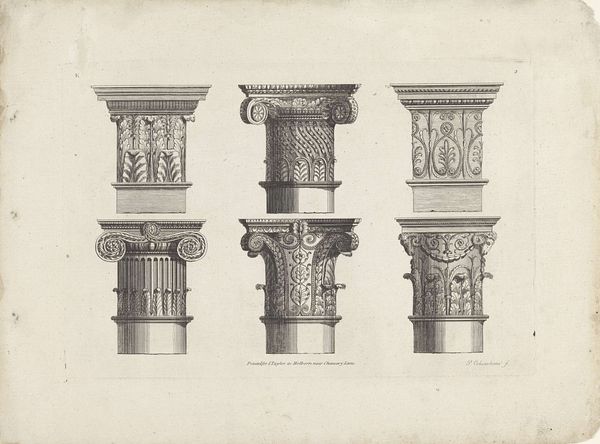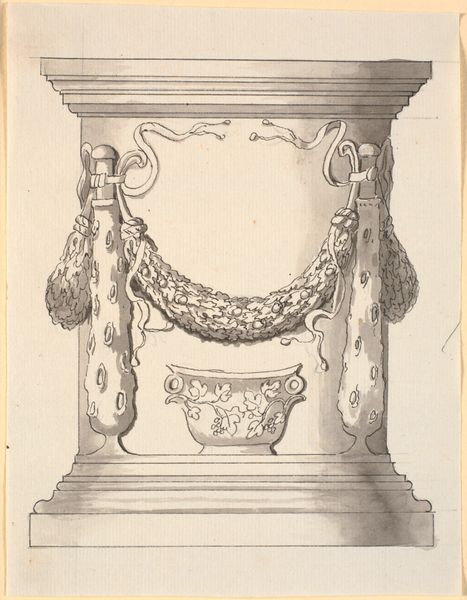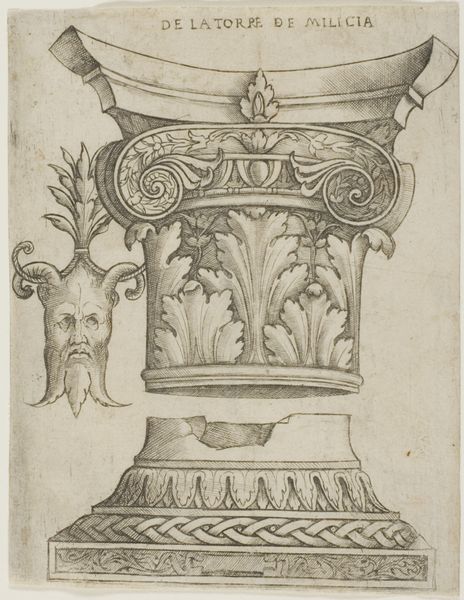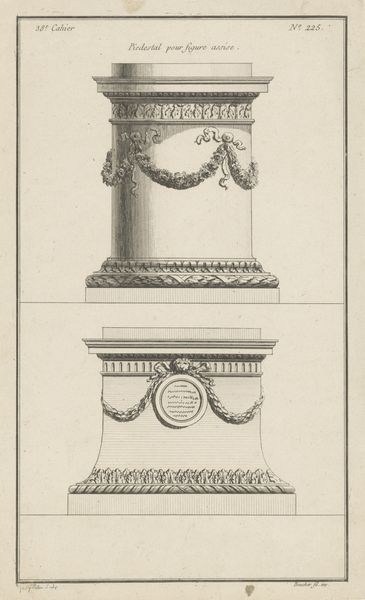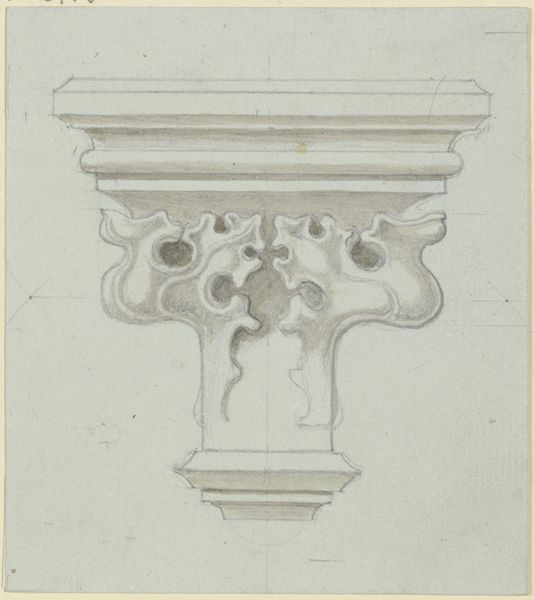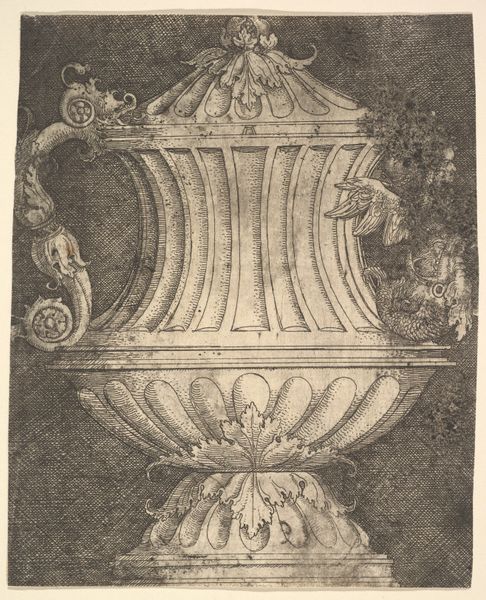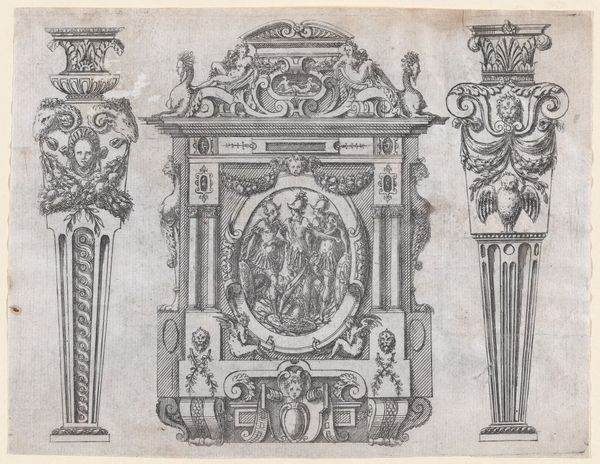
Speculum Romanae Magnificentiae: Composite capital 1530 - 1580
0:00
0:00
drawing, print, engraving, architecture
#
drawing
# print
#
classical-realism
#
11_renaissance
#
geometric
#
italian-renaissance
#
engraving
#
architecture
Dimensions: sheet: 4 5/8 x 5 1/2 in. (11.8 x 14 cm) mount: 9 3/16 x 8 1/16 in. (23.3 x 20.5 cm)
Copyright: Public Domain
This print of a composite capital, made around 1575 by Monogrammist G.A. & the Caltrop, gives us a look into the labor and skill involved in architectural design during the Renaissance. The print itself is made from ink on paper, a relatively accessible medium, yet it depicts a highly ornate capital, showcasing layers of intricate carving. Notice the acanthus leaves and delicate floral patterns. These details would have required immense skill and time from a stone carver. The print belongs to a series called "Speculum Romanae Magnificentiae", a set meant to document the glories of ancient Roman architecture. The series served as a pattern book, and offered inspiration to builders and patrons. These prints played a crucial role in disseminating classical styles throughout Europe. This print, therefore, is not just a visual record. It is a testament to the collaboration between designers, skilled craftsmen, and the economics that supported such elaborate creations. It reminds us that even seemingly simple images can reveal complex relationships between art, labor, and society.
Comments
No comments
Be the first to comment and join the conversation on the ultimate creative platform.


